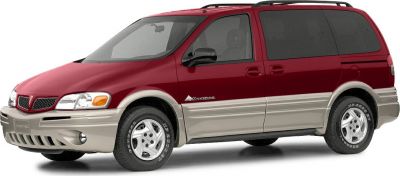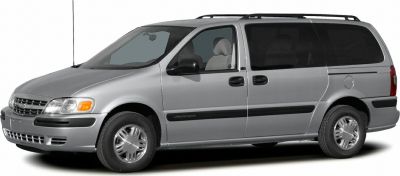 1999 Honda Odyssey II Dimensions, Size & Specs
1999 Honda Odyssey II Dimensions, Size & SpecsMeasurements of the 1999 Honda Odyssey II, engineered for optimal performance and comfort
| Dimensions | |
|---|---|
| Length: | 4770-5110 mm187.8-201.2 in15.6-16.8 ft |
| Width: | 1795-1920 mm70.7-75.6 in5.9-6.3 ft |
| Height: | 1630-1740 mm64.2-68.5 in5.3-5.7 ft |
| Trunk Capacity: | 280-914 liter9.9-32.3 cu ft |
| Trunk Capacity (Max): | 1235-4137 liter43.6-146.1 cu ft |
| Weight Specifications | |
| Curb Weight: | 1490-1990 kg3285-4387 lbs |
| Maximal permitted Weight: | 2145 kg4729 lbs |
| Tire Specifications | |
| Tire Sizes: |
|
The Honda Odyssey II, produced between 1999 and 2004, represents the second-generation of this well-known minivan, designed to provide spacious family transportation combined with practical versatility. This generation of the Odyssey comes with varying dimensions to suit different trims and configurations, ranging in length from 4770 mm to 5110 mm (approximately 188 inches to 201 inches), showcasing its ample road presence and interior space.
Width measurements span from 1795 mm to 1920 mm (about 71 inches to 76 inches), ensuring comfortable cabin room and stability on the road. The vehicle's height varies between 1630 mm and 1740 mm (roughly 64 inches to 69 inches), which helps accommodate three rows of seating while maintaining a balanced profile for urban and highway driving.
Curb weight of the Odyssey II ranges between 1490 kg and 1990 kg (3285 to 4390 lbs), reflecting the diverse engine and equipment options available throughout its production. Maximum allowable weight goes up to 2145 kg (about 4730 lbs), supporting multiple passengers and cargo with ease.
Luggage capacity is a standout feature of the Odyssey II, starting at 280 liters (nearly 9.9 cubic feet) with all seats in use, and expanding significantly to between 914 liters and 1235 liters (32.3 to 43.6 cubic feet) when folding down the rear seats. When all rear seats are folded flat, cargo space expands dramatically, ranging from 4137 liters (146 cubic feet) allowing for extensive cargo carrying capability, ideal for road trips or transporting bulky items.
The vehicle is equipped with a selection of tire sizes to complement its size and ensure optimal handling, including 205/65 R15, 215/60 R16 V, and 225/60 R16 tires, balancing comfort and performance.
Overall, the Honda Odyssey II from 1999 to 2004 strikes a balance between a roomy interior and practical dimensions, making it a reliable choice for families seeking a minivan that comfortably accommodates both passengers and cargo.
Discover the standout features that make the 1999 Honda Odyssey II a leader in its class
Have a question? Please check our knowledgebase first.
The Honda Odyssey II produced between 1999 and 2004 has a length that ranges from 4770 mm to 5110 mm. This translates to approximately 187.8 inches to 201.2 inches (or about 15.65 to 16.77 feet). The variation in length depends on specific trim levels and regional configurations. This size allows for ample interior space typical for a minivan, providing a versatile and comfortable setting for passengers and cargo. The extended length on certain models offers increased rear cargo or third-row space, enhancing its practicality for families or groups.
The width of the Honda Odyssey II ranges from 1795 mm to 1920 mm, which is approximately 70.7 inches to 75.6 inches (or about 5.9 to 6.3 feet). This width is inclusive of side mirrors and vehicle body, subject to trim level and certain regional model differences. The considerable width contributes to a stable driving experience and provides spacious seating inside the cabin, especially across the second and third rows. It balances maneuverability with interior roominess, which is vital for a family-oriented minivan.
The Honda Odyssey II's height varies between 1630 mm and 1740 mm, translating to about 64.2 inches to 68.5 inches (or roughly 5.35 to 5.7 feet). This dimension varies depending on suspension settings, roof attachments such as antennas or roof rails, and trim levels. The height ensures comfortable headroom for passengers in all three rows of seats and adequate clearance for most residential garages and parking structures, while maintaining an aerodynamic profile.
The Honda Odyssey II has a curb weight ranging from roughly 1490 kg to 1990 kg. In imperial terms, that is approximately 3285 to 4387 pounds. This weight range accounts for differences in engine options, equipment levels, and safety features across the model range. The weight affects aspects such as fuel economy, acceleration, and handling balance. Despite its size, the Odyssey II remains relatively light for its class, contributing to its efficiency and ease of driving.
The maximum weight the Honda Odyssey II can handle (Gross Vehicle Weight Rating, GVWR) is 2145 kg, which is about 4729 pounds. This includes the weight of the vehicle itself, passengers, cargo, and any additional equipment. It's crucial not to exceed this limit for safety reasons and to maintain optimal vehicle performance. The ample carrying capacity makes it suitable for transporting large families and significant luggage or gear, reinforcing its role as a practical minivan.
The luggage capacity of the Honda Odyssey II varies considerably depending on the seat arrangement. With all rear seats in use (raised), it offers between 280 liters and 914 liters of cargo space, roughly 9.9 cubic feet to 32.3 cubic feet. When the rear seats are folded down, the capacity expands dramatically, from 1235 liters up to 4137 liters, or approximately 43.6 to 146.1 cubic feet. This flexibility allows owners to accommodate everything from grocery runs to large family trips or bulky cargo items, making the Odyssey highly versatile.
Standard residential garages typically measure about 2440 mm (8 feet) wide by 4880 mm (16 feet) deep, with a height clearance of around 2130 mm (7 feet). Given the Honda Odyssey II's dimensions—length up to 5110 mm (201.2 inches or ≈16.77 feet), width up to 1920 mm (75.6 inches or ≈6.3 feet), and height up to 1740 mm (68.5 inches or ≈5.7 feet)—parking it in a standard garage could be challenging due to the length exceeding the typical garage depth. While width and height generally fit comfortably, owners with standard single-car garages may need to consider slightly larger garage dimensions or park carefully to avoid space constraints.
Compared to its predecessor, the first-generation Honda Odyssey (1994-1998), the Odyssey II (1999-2004) saw significant size and feature enhancements. The second generation increased in length, from around 4790 mm to 5110 mm at its longest, compared to about 4745 mm for the first generation. The width and height also expanded, giving more interior space and comfort. These dimensional increases translated into better passenger room, more flexible seating layouts, and increased cargo capacity. The Odyssey II introduced updated styling, improved safety features such as side airbags on some trims, and a more refined suspension for ride comfort. Overall, the II generation was a clear evolution focusing on family usability and comfort.
The Honda Odyssey II competes closely in size with other popular minivans from its production era, including the Toyota Sienna and Chrysler Town & Country. The Odyssey II's length range of 4770 to 5110 mm (187.8 to 201.2 inches) places it in a similar ballpark with the Sienna, which generally measured around 4950 mm (195 inches), and the slightly longer Town & Country at about 5140 mm (202 inches). Width-wise, the Odyssey II's range of 1795 to 1920 mm (70.7 to 75.6 inches) is comparable or slightly narrower than rivals, making it somewhat easier to maneuver in tight spaces. Cargo and passenger space are competitive, with all three models offering versatile seating and ample luggage capacity, but the Odyssey’s efficient use of interior volume and folding seat configurations often earn it praise for practicality and comfort. Price point, reliability, and feature sets also influence buyer choice.
The Honda Odyssey II came equipped with different tire sizes depending on trim levels and market specifications. Standard tire sizes include 205/65 R15, 215/60 R16 V, and 225/60 R16. The 15-inch wheels with 205/65 tires offer a smooth ride and are often more economical. Moving to 16-inch tires with wider widths (215 mm or 225 mm) and lower profiles provides enhanced grip, handling stability, and a sportier feel but may slightly reduce ride comfort due to the stiffer tire sidewalls. Tire selection impacts fuel economy as well as road noise. Owners often balance between comfort and performance based on their driving needs.
Discover similar sized cars.

| Production: | 1996-1999 |
|---|---|
| Model Year: | 1997 |
| Length: | 4750-5115 mm187.0-201.4 in |
| Width: | 1845 mm72.6 in |
| Height: | 1710-1730 mm67.3-68.1 in |

| Production: | 1996-2004 |
|---|---|
| Model Year: | 1997 |
| Length: | 4755-5113 mm187.2-201.3 in |
| Width: | 1830-1847 mm72.0-72.7 in |
| Height: | 1710-1730 mm67.3-68.1 in |

| Production: | 1996-2005 |
|---|---|
| Model Year: | 1997 |
| Length: | 4747-5103 mm186.9-200.9 in |
| Width: | 1829-1850 mm72.0-72.8 in |
| Height: | 1712 mm67.4 in |
